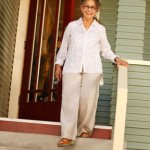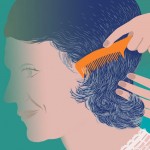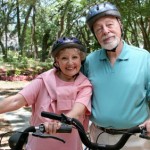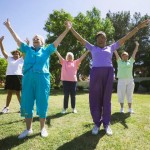“New studies show that individuals who experience the greatest loss of hearing are at a higher risk of having Alzheimer’s
disease or other forms of dementia when compared to individuals with mild or no hearing loss.”
For several years I’ve felt certain that my Mom’s cognitive decline began with her hearing loss. She had worn a hearing aid for many years and I falsely assumed that the hearing aid was providing Mom with the equivalent of “normal” hearing.
When Mom first began to show symptoms of repeating herself, asking the same question over and over, and being unable to carry-on a simple conversation, I blamed it on her hearing loss. She’d worn the same hearing aid for years and replacing the batteries did not improve the situation.
Finally, I convinced Mom to go for hearing tests and possibly a new hearing aid. As soon as the technician checked Mom’s old hearing aid, she let us know that it hadn’t worked for, probably, years. Through demonstrations with me speaking to Mom from behind her back–then face to face, I was surprised to learn that Mom was reading my lips and never heard a single word. I had no idea. She had pretended to hear for so long, she was very good at it.
After Mom was fitted with a brand new hearing aid, the technician read a list of 100 words and asked Mom to repeat each one back to her. Although Mom could hear the technician without issue, she did not repeat a single word correctly. ‘Red’ was repeated back as ‘bed’, ‘tin’ was ‘pin’, ‘pill’ was ‘till’, and on and on it went.
“No wonder she couldn’t handle conversations,” I realized. Instead of hearingrational sentences, Mom was hearing gobbeldy gook. The technician explained to me, that Mom had not heard for so long that she could no longer differentiate betweenconsonants. So when Mom repeated the words back to the technician, none of theconsonants that Mom used were correct.
The condition could be corrected, the Technician told us. By adhering to a rigorous schedule of wearing the new WORKING hearing aid, Mom’s cognition for consonants would return over time.
The technician did warn, though, that Mom might show symptoms of cognitive impairment if she didn’t wear the new hearing aid for the specified times recommended.
Without it, Mom understood very little of anything that was said to her. With it, she was slightly confused since she wasn’t hearing language correctly. But–overtime, the technician assured us, the consonants would come back to her if Mom wore the hearing-aid for the scheduled times .
Mom was 79 years old at that time; set in her ways and hard-headed. She had grown accustom to her silent world and she liked it. Small sounds of every-day living annoyed her; a fan blowing, the hum of the refrigerator, the click of a light switch. She refused to wear the new hearing aid at all.
Two years later Mom was diagnosed with Alzheimer’s. And I’ve always blamed the hearing loss, despite many who thought it was foolish conjecture.
Now, this study finds a correlation. The study lasted nearly 20 years, initiated by the National Institute on Aging and Johns Hopkins. “Researchers found that people with some level of hearing loss to start the study were also more likely to eventually suffer from dementia. Individuals with severe hearing loss were five times as likely to eventually develop dementia when compared to individuals without any hearing loss.”
“Experts explain the link between dementia and hearing loss is currently unknown, but this study provides some insight as to a potential relationship between the two, and the potential risks of individuals failing to treat hearing loss as it begins.”
I have not inherited my Mom’s hearing issues, but my younger brother has and I nag him no-end to get a hearing aid before he suffers any cognitive losses! If you have any hearing issues, I urge you to have your hearing tested and wear a hearing aid if it’s recommended!
*Published: http://www.free-alzheimers-support.com/wordpress/hearing-loss-may-be-associated-with-dementia-alzheimers/















